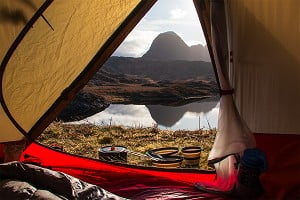
If you’re into backpacking or wild camping in the UK, at some point or another you’ll have pondered the question of stoves. Which is best? Maybe you started off with a Trangia, and now favour the light weight and reliability of an alcohol stove. Maybe the performance of liquid fuel was an attractive option for Scottish winter or Alpine use. Or maybe the simplicity and convenience of canister gas won you over. But there is a fourth option, and despite being as old as the hills it is now making a comeback. It’s the wood-burning stove. They come in many shapes and sizes, but wood stoves for backpackers tend to be simple metal containers for holding a small twig fire and supporting a pan. There are several different designs, and performance varies considerably.
The Solo Stove comes in three varieties: the Solo Stove Lite, the Solo Stove Titan (2-4 people), and the Solo Stove Campfire (4+ people). In practice, the only difference is the size and weight of each model.
These are wood gasifier stoves. A clever dual-wall design pulls air through lower vents, preheats it, then feeds it back through smaller holes at the top of the firebox for more efficient combustion. The claim is that this reduces fuel use and boil time - and I've certainly found it fast.
I think the Lite version is the one most UK wild campers will be interested in, and over the summer I've used it on a number of trips in Britain and the Pyrenees.
The finish is a very attractive brushed stainless steel. It feels surprisingly lightweight, yet it’s also heavy-duty. The stove comes along with a handy carrying bag, and a voucher for various free online ‘perks’ including recipe videos, gear giveaways, and gear-testing opportunities. Information about using the stove is printed on the box but if you're a newcomer to this type of stove then here's a video that explains all (it's fairly simple):
"When the circumstances are right to actually use it, the Solo Stove is an absolute pleasure to use. It just feels right to boil water and cook food over a real flame"
In use
My first burn was in the controlled environment of my back garden. I used crumpled newspaper as tinder and broke up small sticks, building a tiny fire before lighting it with a flint and steel. To be honest, the first burn wasn’t as smooth as it could have been. I used too much newspaper, which choked off airflow a little and it seemed to take an age to get the fire going as well as it should.
But once I had a merry blaze, I was surprised at how quickly it brought a pan of water to the boil. My pan has 600ml capacity and I measured a boiling time of 6.34 minutes. That’s competitive with an ultralight alcohol stove but a little slower than a canister gas stove. It will keep boiling for as long as you keep feeding it fuel.
I soon refined my technique. You can use any kind of natural tinder you like, but I prepared a ziploc bag containing cotton wool soaked in Vaseline. This works a treat with any ignition source and results in a far cleaner burn than newspaper.
In addition to wood burning, it’s easy to use the Solo Stove as a kind of glorified windshield and pot support for other fuel sources. Inserting a small metal plate (say, the bottom of a tin can) turns it into an Esbit fuel tablet stove for instance. Note that the use of solid-fuel tabs in the Solo Stove is not documented by the manufacturer, so it’s safe to say that you do this at your own risk!
I also tested the Solo Stove Alcohol Burner, an optional accessory (£22.50) which transforms the stove into something resembling a Trangia. In fact, this burner is almost identical to the standard Trangia burner; the only difference is the addition of a small metal folding handle to the included simmer ring, which makes it easier to snuff out the burner. While this improves the versatility of the setup, there are to be honest far lighter and more efficient options, at a similar or cheaper price, if you want an alcohol burner to go with the Solo Stove.
While it may be heavier and less efficient than a stove specifically designed for this purpose, the additoin of an alcohol burner does give you a useful backup option if you’re in the field and nervous about finding dry wood.
Tested in Wales
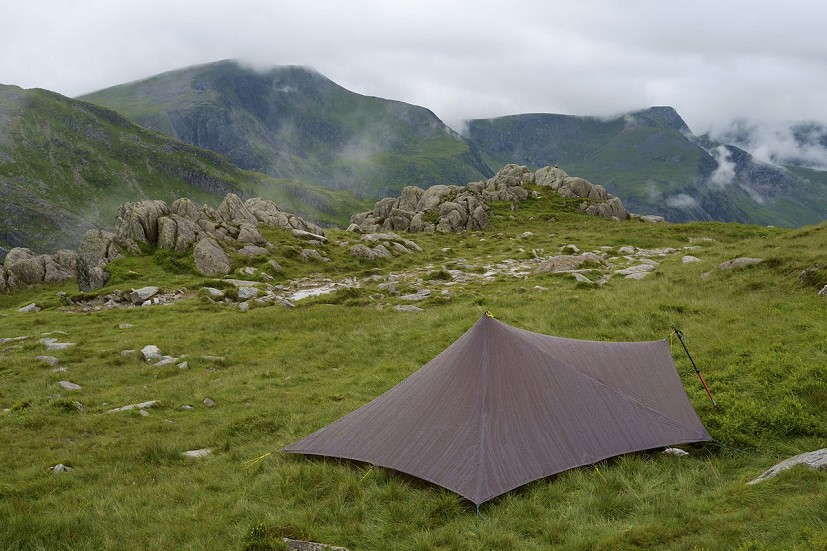
This all sounds great in theory, but I’m sure you’re wondering how practical a wood-burning stove might be in the soggy mountains of Britain. To find out, I took the Solo Stove to North Wales during an attempt at the Welsh 3000ers over three days.
Conditions were dreadful on the hill, with continuous rain for over 24 hours. On my first camp, high in the northern reaches of the Carneddau, there was no available fuel so I used my alcohol burner instead. It was a similar story on the second camp up at Bwlch Tryfan. I tried to light a handful of damp heather stalks, but had no success until I doused the entire lot in methylated spirits (at which point I’d have been better off just using it as an alcohol stove).
I know what you’re thinking – this is hardly a fair test for a wood-burning stove! But these are fairly typical conditions faced by hillwalkers in the UK, where fuel is scarce and the weather often poor.
Tested in the Pyrenees
I hiked a 180-mile route in the Pyrenees this summer, keeping to the Haute Route Pyrenees and GR11 between Cauterets and Vielha. Despite the urgent need to keep my pack as light as possible, I took the Solo Stove along in anticipation of forest camps with plentiful dry fuel.
It was a great trip: hot, dry weather, mountains galore, and some of the finest scenery I’ve hiked through in Europe. But I found that I was camping above the treeline almost every single night, and the one time I actually camped in a forest, there were numerous signs warning against lighting a fire.
Does the Solo Stove qualify as an open fire? I don’t think so – it does not char or noticeably mark the surface it’s standing on, and the firebox is completely contained. But a fellow hiker warned me that the rangers were being particularly vigilant this year, so I didn’t risk it.
By the time I reached Gavarnie, I had been eating cold food most nights anyway and reducing the weight of my pack had become my number-one priority. I sent the Solo Stove back home, ate cold food for the rest of the trip, and was glad of the 450g saved (including my pot and spork).
Tested in Lincolnshire
I do a lot of hiking in Lincolnshire. Despite the lack of hills, there’s some good walking in the Wolds. And, it turns out, it’s the perfect environment for using a wood-burning stove.
"It may be a relaxing stove to use, but that doesn’t mean it’s slow – I’ve found boiling time to be fairly consistent"
In June, I camped on the beach and enjoyed a meal at dusk, fuelled by tinder-dry driftwood washed up on the tide. I have stealth-camped in little patches of woodland and gathered damp twigs that soon flared to life thanks to my carefully prepared tinder. And over the course of these wild camps for the last few months, I’ve learned a few things about the Solo Stove and who it is for.
When the circumstances are right to actually use it, the Solo Stove is an absolute pleasure to use. There’s something calming about pitching your shelter and then going for a wander to collect twigs, break them into the right lengths, and arrange them in a pile for use. Then there’s the glow of the fire and the smell of smoke. It just feels right to boil water and cook food over a real flame, although you can’t safely do this under the flysheet of your shelter, of course. But the smoke will keep the midges away and it will take more than a light shower to put the fire out.
It may be a relaxing stove to use, but that doesn’t mean it’s slow – I’ve found boiling time to be fairly consistent, and certainly acceptable, once you have a good blaze going. The trick is to feed it fresh twigs more or less continuously. If you leave it without fuel for more than a minute or two the heat output drops off very fast, although it’s usually no problem to chuck a few more twigs in and get it going again.
Simmering isn’t really practical because you don’t have much control over the heat. It’s either at full blast or barely hot enough to raise bubbles. This is really a stove for boiling water, although experienced users may be able to get far more versatility out of it with practice.
The design is fairly resistant to light winds, but in a moderate breeze much of the heat is blown away from the pan, which can double the time it takes to achieve a boil. A separate windshield is necessary in these conditions.
The fuel burns down to a fine white ash. Soot is, of course, a concern, and your cookware will get sooty. If you were in the Scouts you might remember the trick of covering the pan with Fairy Liquid before use, but this is hardly practical on the trail. I’ve found that it’s best just to keep your pan in a bag to stop the soot from fouling your gear.
How about durability? I’ve used it for about ten nights, and although the finish has become a little tarnished from the heat (which is normal), there is otherwise no sign of wear. You’d have to use it as a football to seriously damage it, I think.
So just who is this stove for?
The Solo Stove is a strange beast. Any canister stove on the market will be easier, cleaner and quicker to use, with less hassle and probably less overall weight. An experienced user will find an ultralight alcohol setup more practical in most scenarios too. It’s just not feasible to use the Solo Stove in many situations faced by the UK backpacker.
So why would you even consider it? I think it’s all about the experience.
If you mainly hike in the British hills and just need something that will boil water with a minimum of fuss, the Solo Stove is absolutely not for you. But if you’re going backpacking in a forested area and the trip will be just as much about the camping as the hiking, this product is a natural fit. It’s a genuine pleasure to use and it gives you the essence of the real campfire experience without the downsides. In some areas where campfires are banned, you may be able to get away with the Solo Stove. I think hikers in heavily forested wilderness areas in Europe and the United States will get the most out of this product, because if you’re confident of finding dry wood, the weight will more than pay for itself.
For what it is, I think the Solo Stove is great, and it’s certainly competitive with similar products available today. I would prefer a lighter model in Titanium, but actually 252g (my weight) isn’t too bad for what you get – and it’s built to last a lifetime. It will never become obsolete and it doesn’t rely on fossil fuels or proprietary canisters.
Solo Stove say:
The Solo Stove doesn't just burn wood. It actually cooks the smoke out of the wood and then burns the smoke not once, but twice! The cooking ring's angled lip also increases efficiency by directing heat towards your pot minimizing heat loss. It also acts as a windshield while still allowing oxygen to flow inward. The Solo Stove is indeed one of the most efficient wood burning stoves you'll ever own.
- Solo Stove Lite £60
- Packed size: Height 9.65cm, width 10.8cm
- Assembled size: Height 14.5cm, width 10.8cm
- Weight: 255g (252g measured)
- Materials: 304 stainless steel, nichrome wire
- Fuel: sticks, twigs, pine cones and other biomass
- Boil time: 8-10 mins (0.95 litres of water)
For more info see solostove.com



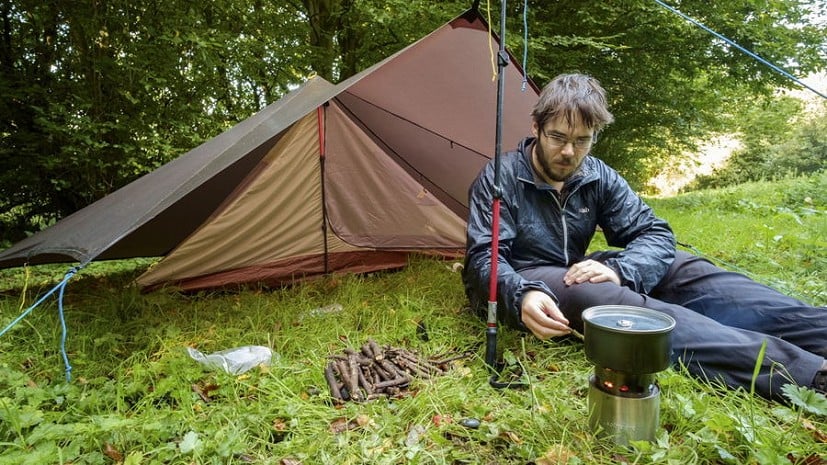
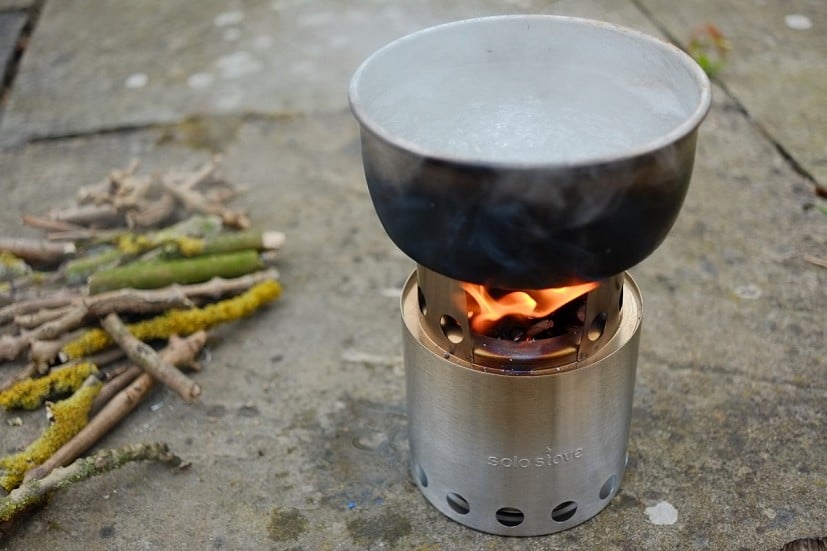
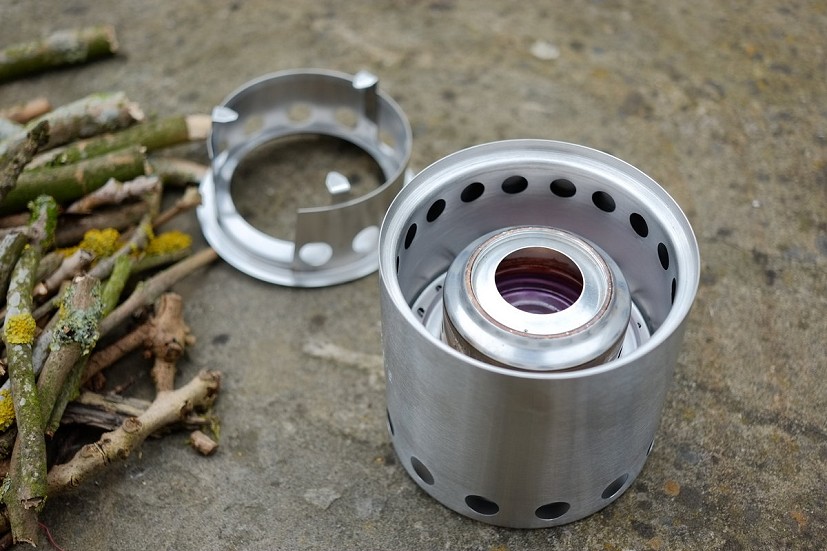
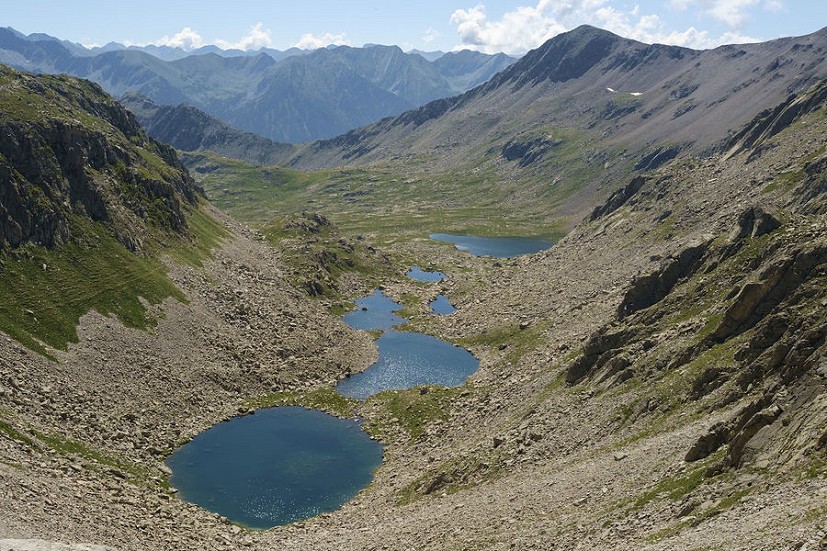
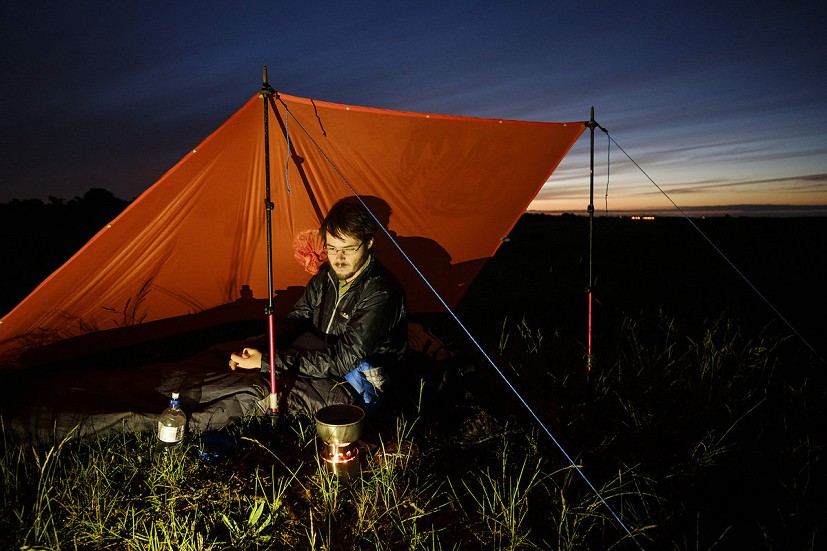
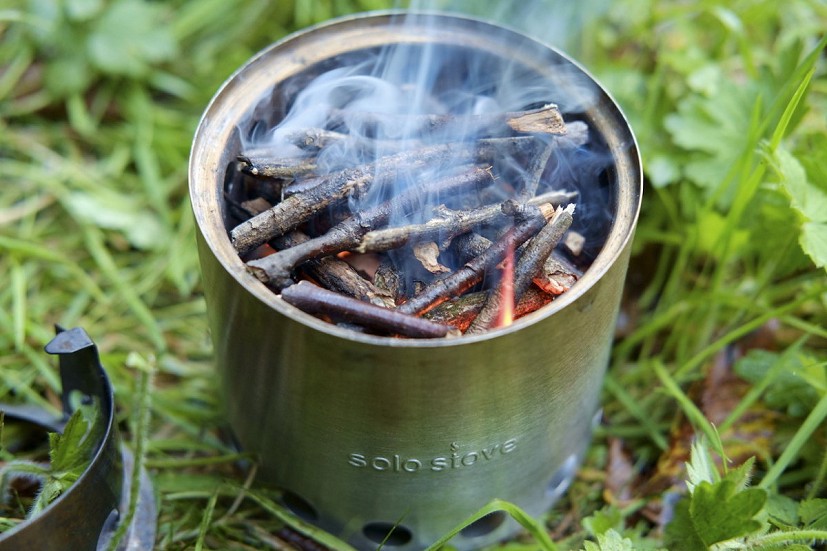
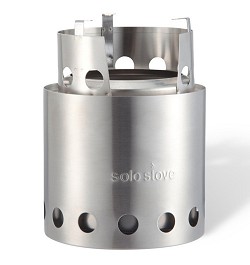






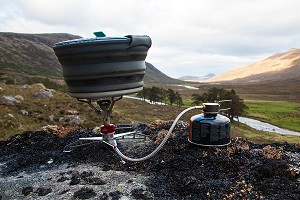
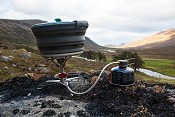
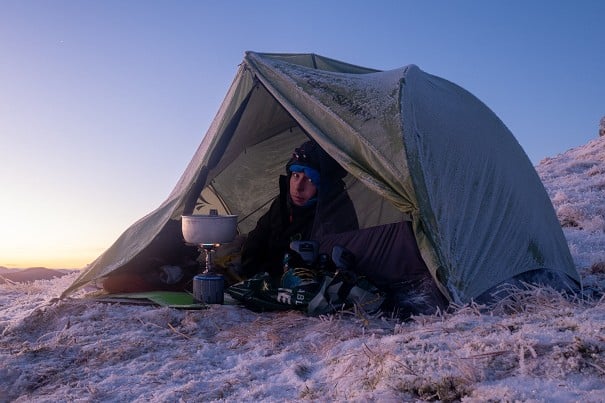
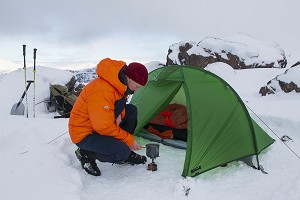
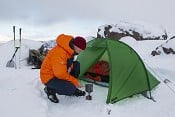
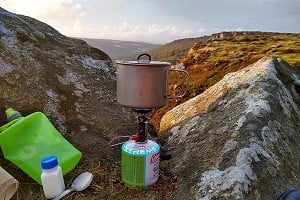
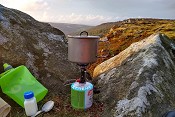
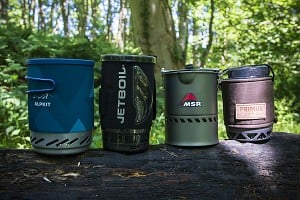
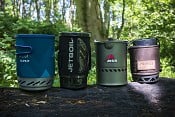
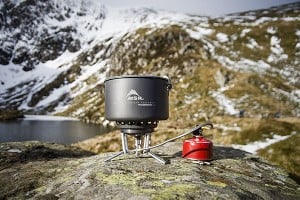

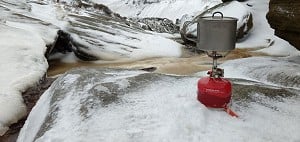

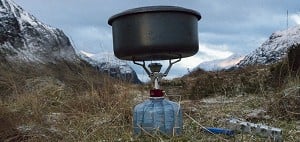

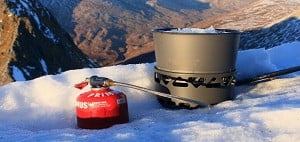

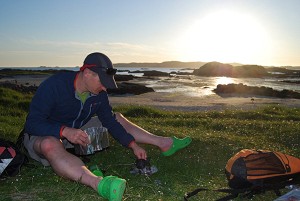

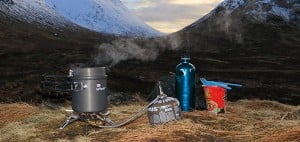

Comments